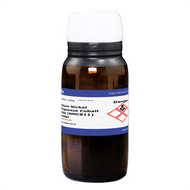Metal Oxides
Metal oxides are compounds formed between metals and oxygen, and they display a wide range of chemical and physical properties. Metal oxides are known for their high melting points, stability, and are often insulating or semiconducting in nature. These properties make metal oxides very versatile and useful in various applications. They are crucial in catalysis, both as catalysts and as supports for other catalysts, in environmental applications (like filters and sensors), in electronics (as semiconductors, insulators, and conductors in the form of thin films), and in energy storage (such as lithium-ion battery electrodes).
Semiconducting metal oxides are a group of materials characterized by their unique electrical properties, which lie between those of conductors and insulators. These oxides are typically metal compounds with oxygen, such as zinc oxide (ZnO) and titanium dioxide (TiO2). They are called semiconductors because they have a bandgap that allows them to conduct electricity under certain conditions, such as the presence of light or heat, which makes them very useful in various applications.
Metal oxides play a crucial role in battery technology, primarily in the electrodes of various types of batteries. In lithium-ion batteries, metal oxides are commonly used as cathode materials. The ability to release and take up lithium ions during the charging and discharging cycles is vital. Examples include lithium manganese oxide (LiMn2O4) and lithium nickel cobalt aluminum oxide (NCA).
Jump to: Browse Metal Oxides | Resources and Support
Browse Metal Oxides
Related categories: Advanced Ceramics, Low Dimensional Materials, 2D Materials
Filter by Metal:
Filter by Application:
Resources and Support
 What are Advanced Ceramics?
What are Advanced Ceramics?
Advanced ceramics are the next generation of ceramic materials. According to the 1993 Versailles project on Advanced Materials and Standards (VAMAS) an advanced ceramic material is defined as "an inorganic, non-metallic, basically crystalline material of rigorously controlled composition and manufactured with detailed regulation from highly refined and/or characterized raw materials giving precisely specified attributes".
Learn more... What are Transparent Conductive Oxides?
What are Transparent Conductive Oxides?
Transparent conductive oxides (TCOs) are metal oxides, such as zinc oxide and tin oxide, that are capable of conducting electricity whilst being optically transparent. This means they absorb a low number of electromagnetic waves within the visible region of the spectrum, appearing see-through.
Learn more... An Overview of Metal Oxide Nanoparticles
An Overview of Metal Oxide Nanoparticles
Metal oxide (MOx) nanoparticles (MONPs) are a class of nanomaterial with interesting and diverse chemical, optical, electrical and magnetic properties. Different metals bond to oxygen forming a variety of crystal structures under specific conditions. The shape and nanostructure of these materials effects their surfaces which in turn impacts the way they interact with light, electricity, magnetic fields and other materials.
Learn more...Metal oxides are used as photocatalysts due to their ability to accelerate chemical reactions when exposed to light. Examples include zinc oxide (ZnO), iron oxide (Fe2O3), titanium dioxide (TiO2) which possess useful electronic structures, light absorption properties and charge transport characteristics suited to photocatalysis.
Learn more...Metal oxide semiconductors are comprised of positive metallic ions connected to negative oxygen ions via ionic bonds. Typically in solid form, they are non-stoichiometric compounds, which means their chemical formula cannot be exactly represented by a ratio of small natural numbers.
Learn more...Metal oxides (mainly II-VI semiconductors) are used as sensors due to their low cost, ease of manufacture, quick response time, wide detection ranges and resistance to harsh conditions. Metal oxide sensors are versatile semiconducting devices that detect gases, chemicals, and biological analytes by converting surface interactions into measurable electrical signals.
Learn more...A ternary lithium battery is a type of lithium-ion battery (LIB) that has a cathode composed of three different metals. The metals are nickel (Ni), cobalt (Co), manganese (Mn) or aluminium (Al).
Read more...Transition metal oxides (TMOs) are compounds of transition metals bonded to oxygen. A transition metal is an element in the periodic table that has a partially filled d-shell or which forms cation with an incomplete d-shell. TMOs have been extensively researched due to their wide range of chemical and physical properties.
Learn more...The NCA battery gets its name from the cathode active material, lithium nickel cobalt aluminum oxide (LiNixCoyAlzO2, where x+y+z=1) which gets shortened to nickel cobalt aluminum (NCA). NCA is the cathode active material with a specific ratio of metals.
Learn more...



























